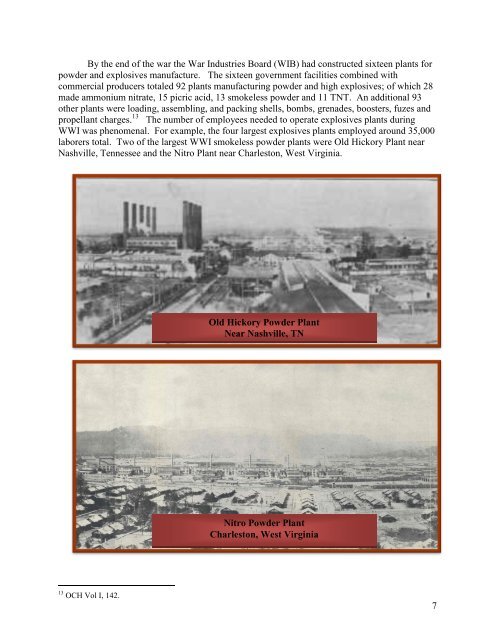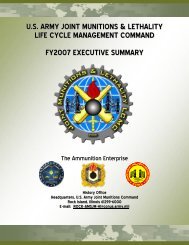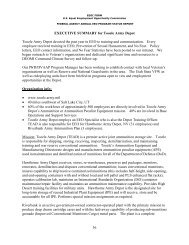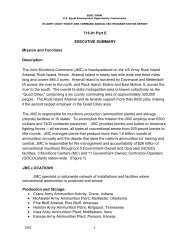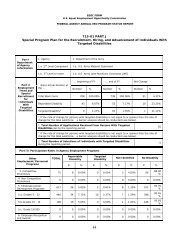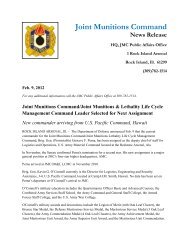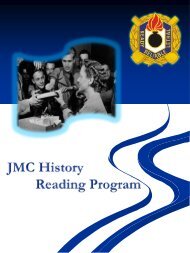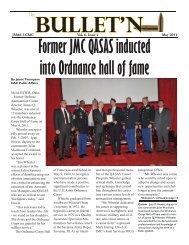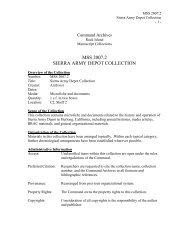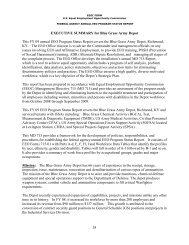History of the Ammunition Industrial Base - JMC - U.S. Army
History of the Ammunition Industrial Base - JMC - U.S. Army
History of the Ammunition Industrial Base - JMC - U.S. Army
Create successful ePaper yourself
Turn your PDF publications into a flip-book with our unique Google optimized e-Paper software.
By <strong>the</strong> end <strong>of</strong> <strong>the</strong> war <strong>the</strong> War Industries Board (WIB) had constructed sixteen plants for<br />
powder and explosives manufacture. The sixteen government facilities combined with<br />
commercial producers totaled 92 plants manufacturing powder and high explosives; <strong>of</strong> which 28<br />
made ammonium nitrate, 15 picric acid, 13 smokeless powder and 11 TNT. An additional 93<br />
o<strong>the</strong>r plants were loading, assembling, and packing shells, bombs, grenades, boosters, fuzes and<br />
propellant charges. 13 The number <strong>of</strong> employees needed to operate explosives plants during<br />
WWI was phenomenal. For example, <strong>the</strong> four largest explosives plants employed around 35,000<br />
laborers total. Two <strong>of</strong> <strong>the</strong> largest WWI smokeless powder plants were Old Hickory Plant near<br />
Nashville, Tennessee and <strong>the</strong> Nitro Plant near Charleston, West Virginia.<br />
Old Hickory Powder Plant<br />
Near Nashville, TN<br />
Nitro Powder Plant<br />
Charleston, West Virginia<br />
13 OCH Vol I, 142.<br />
7


